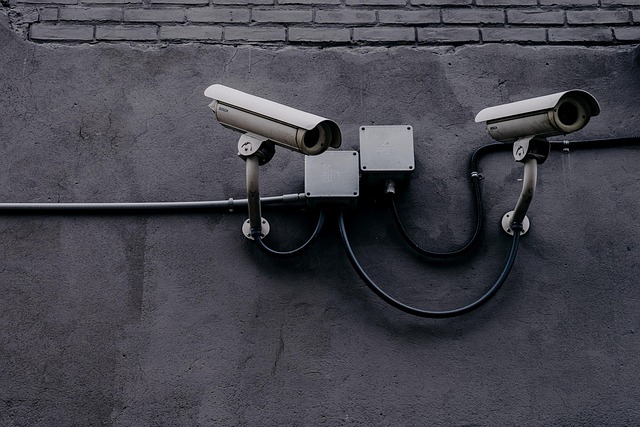Pigeon infestations in Denver commercial buildings require a multi-faceted approach. Inspect exterior for entry points like broken windows and gaps. Implement tailored sealing with weatherproof materials to prevent access. Regular maintenance, cleaning, and quick repairs deter pigeons and rodents. Use visual/auditory deterrents or professional services for humane control. Effective sealing strategies create bird-free environment, protecting tenants and community health.
In the vibrant, bustling metropolis of Denver, maintaining commercial buildings free from unwelcome wildlife visitors is a constant challenge. This article explores comprehensive wildlife control strategies, focusing on rodent entry sealing and effective bird control for pigeons. We delve into understanding common entry points for rodents in commercial structures, providing practical solutions for long-term protection against these intruders. Additionally, we highlight successful bird control techniques tailored to Denver’s environment, ensuring a safe, hygienic, and aesthetically pleasing urban landscape.
- Understanding Rodent Entry Points on Commercial Buildings
- Effective Bird Control Strategies for Pigeons in Denver
- Sealing Loopholes: Long-Term Solutions for Wildlife Control
Understanding Rodent Entry Points on Commercial Buildings

Commercial buildings in Denver, like many urban areas, often face challenges with rodent intrusion, particularly from pigeons and other birds. Understanding entry points is crucial for effective bird control for pigeons. These structures provide ample hiding spots, nesting opportunities, and food sources, attracting various avian species. Inspecting the exterior of commercial buildings reveals common access points such as broken windows, gaps in siding, ventilation shafts, and roof repairs. Identifying these potential entries allows building managers to implement tailored sealing strategies using weatherproof materials, ensuring a secure and bird-free environment.
Regular maintenance plays a significant role in preventing rodent entry. Keeping gutters clean, securing trash cans with tight-fitting lids, and promptly fixing any structural damage are essential practices. By addressing these entry points proactively, commercial building owners can deter pigeons and other birds from finding sanctuary within their properties, promoting a cleaner, safer workspace.
Effective Bird Control Strategies for Pigeons in Denver

Pigeon populations can thrive in urban settings, especially in areas with an abundance of food sources and suitable nesting sites, making them a common pest for commercial buildings in Denver. Effective bird control for pigeons requires a multifaceted approach that addresses both prevention and removal. One proven strategy involves implementing physical barriers such as bird nets, spikes, or sculptures designed to deter pigeons from landing and nesting on rooftops and ledges. Regular cleaning and maintenance of these areas can also discourage pigeons, as they prefer dirty, undisturbed spaces.
For larger-scale commercial properties, a combination of visual and auditory deterrents has shown success. Motion-activated sprinklers, reflective tape, and noise makers like wind chimes or ultrasonic devices can create an environment that is less appealing to pigeons while being environmentally friendly and non-lethal. Additionally, working with professional wildlife control services in Denver who specialize in bird management can provide expert advice tailored to the specific needs of the building, ensuring a humanely effective solution for pigeon control on commercial structures.
Sealing Loopholes: Long-Term Solutions for Wildlife Control

Sealing loopholes is a long-term strategy essential for effective wildlife control, especially in urban areas like Denver where bird control for pigeons on commercial buildings is a common challenge. Beyond quick fixes, this approach involves identifying and mitigating entry points that may go unnoticed but serve as highways for rodents and birds. Commercial structures, with their vast exteriors and complex designs, often present numerous opportunities for wildlife to gain access. By implementing robust sealing measures, such as installing high-quality weatherproofing and securing vents and pipes, building managers can significantly reduce the risk of unwanted visitors.
This proactive method not only prevents damage caused by rodents but also ensures a healthier environment for both tenants and nearby residents. For instance, pigeons, known to nest in urban areas, can transmit diseases through their droppings. Effective sealing strategies, tailored to the unique features of each building, offer a sustainable solution to bird control for pigeons on commercial buildings in Denver, fostering a cleaner, safer community.
In addressing wildlife control, especially rodent entry and bird management on commercial buildings in Denver, understanding these creatures’ habits and implementing effective sealing strategies is key. By combining knowledge from identifying entry points to long-term solutions, businesses can create a robust defense against rodents and birds. Adopting the right bird control methods for pigeons, in particular, not only minimizes damage but also ensures a safer, healthier environment for everyone. For commercial properties, this means a strategic, comprehensive approach to sealing loopholes once and for all.
